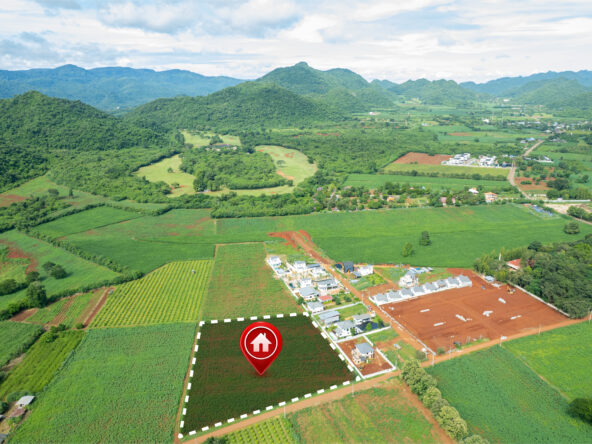Hey folks! Today, we’re jumping headfirst into the wild world of real estate. You know, that ever-shifting landscape where your neighbor’s house could be worth a fortune one day and a bit less the next. So, what’s the secret sauce behind this real estate rollercoaster? Economic trends. Yep, those sneaky indicators like GDP, inflation, and employment rates that quietly dance behind the scenes, pulling the strings of property values.
I. Understanding Economic Trends
A. Definition of Economic Trends
First things first – what the heck are economic trends? They’re like the mood rings of a country’s finances. You’ve got GDP, which is basically the nation’s economic pulse. Is it racing with growth, or is it taking a leisurely stroll? Then there’s inflation, the mischievous character messing with everyone’s purchasing power. These indicators are the breadcrumbs leading us through the financial forest, and real estate enthusiasts better be good at following them.
B. Importance of Monitoring Economic Indicators
Imagine having a crystal ball that gives you a heads-up before the housing market does the cha-cha. That’s what monitoring economic indicators is all about. When you see GDP doing the Macarena, it’s a good sign. History tells us that during economic expansions, real estate values usually throw a party and go up. On the flip side, if things get a bit gloomy in the economic neighborhood, property values might decide to chill out for a bit. By keeping an eye on these indicators, you can be the savvy investor who’s ready to boogie or take a breather.
C. Historical Examples of Economic Trends Affecting Real Estate Values
Let’s take a stroll down memory lane, shall we? Remember the chaos post-2008? Lehman Brothers took a nosedive, and suddenly, property values felt like they were free-falling too. It was like a real estate rollercoaster that no one signed up for. But guess what? We learned something from that wild ride. Real estate is resilient. After the dust settled, the market bounced back. Knowing this history gives us a toolkit for navigating the dips and climbs of the real estate rollercoaster.
II. Factors Influencing Land Values
Alright, buckle up, because we’re about to dive into the factors that can make your piece of land the belle of the ball or the wallflower in the real estate dance.
A. Supply and Demand Dynamics
Imagine this: everyone suddenly wants a piece of the pie, but there’s not enough pie to go around. That’s supply and demand for you. When more people are itching to snatch up land (hello, population growth and urbanization), and there’s not enough to meet the demand, land values start doing the happy dance. Zoning and land use policies also play referee in this game, determining where the party’s at and where it’s a bit more chill.
B. Interest Rates and Financing
Now, let’s talk about the money, honey. Interest rates are like the DJ controlling the tempo of the real estate disco. When rates are low, it’s like the market is dropping the bass, and everyone wants to join the party. Easy financing? That’s the VIP pass. But, if interest rates start climbing, the dancefloor gets a bit emptier. Availability of financing? That’s the key to whether people can afford their dance shoes or not.
C. Economic Development and Infrastructure Projects
Ever notice how a new highway or a fancy shopping mall can suddenly make a neighborhood the place to be? That’s the magic of economic development and infrastructure projects. They can turn a sleepy town into the next big thing, and where there’s development, land values tend to tag along for the ride. Connectivity is like the cool kid in school – everyone wants to be around it.
III. Case Studies
Alright, let’s step into the real world and see how economic trends shape the destiny of land values. Get ready for some juicy case studies that unveil the drama of booms, busts, and everything in between.
A. Boomtown Scenarios
Imagine a quiet town minding its own business when suddenly, boom! The tech industry sets up camp, or a natural resource is uncovered. Overnight, the town becomes the hottest spot on the real estate map. Businesses flourish, people flock in, and land values? They skyrocket. But here’s the plot twist – what goes up doesn’t always stay up. Boomtowns can experience a bust if the economic winds change direction.
B. Economic Downturns and their Effects
Let’s talk about the not-so-glamorous side of the real estate tale – economic downturns crashing the party. Think back to the 2008 financial crisis. Property values took a nosedive, leaving homeowners in a tight spot. But guess what? Those who weathered the storm and held onto their properties eventually reaped the rewards when the market bounced back. It’s a rollercoaster, but sometimes you’ve got to hold on tight for the thrilling ride.
C. Lessons Learned from Case Studies
What’s the golden nugget from these real-life stories? Flexibility is the name of the game. Recognizing the signs of a boom or preparing for a downturn can be the ticket to success. Investors and homeowners can take notes from these case studies, understanding that the real estate market is like a wild dance floor influenced by economic trends. Being ready for the highs and lows is all part of the groove.
IV. Future Trends and Projections
Now that we’ve time-traveled through history and dissected some real-world tales, let’s put on our forecasting hats and gaze into the crystal ball of future economic trends.
A. Analyze Current Economic Indicators
So, what’s the vibe in the current economic disco? Are we on the cusp of an economic boom, or are we gearing up for a slowdown? Analyzing current economic indicators like GDP growth, inflation rates, and employment figures gives us a sneak peek into what’s brewing. These indicators are like the DJ dropping hints about the next track—savvy investors pay attention.
B. Predictions for the Future
Alright, let’s throw some predictions into the mix. Based on the current economic groove, where do we see land values heading? Will the real estate dance floor be packed, or are we in for a more intimate gathering? Economic forecasts provide the script, and while they can’t predict the future with certainty, they give us a script to rehearse our moves.
C. Consideration of External Factors
Hold on, we’re not done. There are always those unexpected guests who crash the party – technological advancements, environmental concerns, and other external factors. How will these influencers shape the dance floor? Technology might make certain areas more attractive, while environmental concerns might shift focus to sustainable spaces. Being aware of these external factors is like having a backup dance crew – they can either spice up the routine or throw in a surprise twist.
V. Mitigating Risks and Capitalizing on Opportunities
Now that we’ve peeked into the future, it’s time to gear up and strategize. In this section, we’ll explore how you can be the real estate maestro, navigating the ever-changing tempo of economic trends.
A. Strategies for Investors and Landowners
So, how do you play your cards right in this real estate poker game? Diversification is the name of the game. Spread your investments across different types of properties and locations. It’s like having a well-rounded playlist; you don’t want to be stuck with just one tune. Keep an eye on the economic indicators, and when you spot a trend, adjust your dance moves accordingly. Whether it’s expanding your portfolio during an upswing or tightening the belt during a downturn, adaptability is key.
B. Diversification of Investments
Picture this: you wouldn’t build a house of cards with only one card, right? The same principle applies to real estate. Diversify your investments across residential, commercial, and maybe even throw in some agricultural land for good measure. Each property type responds differently to economic trends, ensuring you’re not putting all your eggs (or in this case, land) in one basket.
C. Adaptive Planning Based on Economic Forecasts
What’s the secret sauce for real estate success? Adaptive planning. Stay informed about economic forecasts and adjust your strategies accordingly. If the economic weather forecast predicts sunshine, it might be the perfect time to expand your real estate empire. If storm clouds are looming, consider tightening your financial belt and weathering the storm. Being nimble and flexible is your ticket to staying on beat with the ever-changing rhythms of economic trends.
VI. Conclusion
Alright, we’ve covered a lot of ground, from the groovy history of economic trends to the booms, busts, and the strategic dance moves needed to navigate the real estate floor. As we wrap up this journey, let’s revisit the key takeaways.
A. Summarize Key Points
Economic trends are the DJ of the real estate party, setting the tempo for land values. Understanding indicators like GDP, inflation, and employment rates gives you a backstage pass to the market’s performance. Historical events and case studies have shown us that the real estate market is resilient, bouncing back from downturns and thriving during upswings.
B. Emphasize the Dynamic Nature of Economic Trends
Real estate isn’t a static painting; it’s a dynamic dance that evolves with economic trends. Boomtowns rise, economic downturns happen, and external factors throw in unexpected twists. The key is not to resist the rhythm but to learn the steps to keep you on your toes.
C. Encourage Readers to Stay Informed
The real estate landscape is a constantly changing scene. Encourage readers to stay informed, keep an eye on economic indicators, and be adaptable. Like any dance, the more you practice, the better you get. Consider professional advice as your dance instructor, guiding you through the complex steps of the real estate tango.




